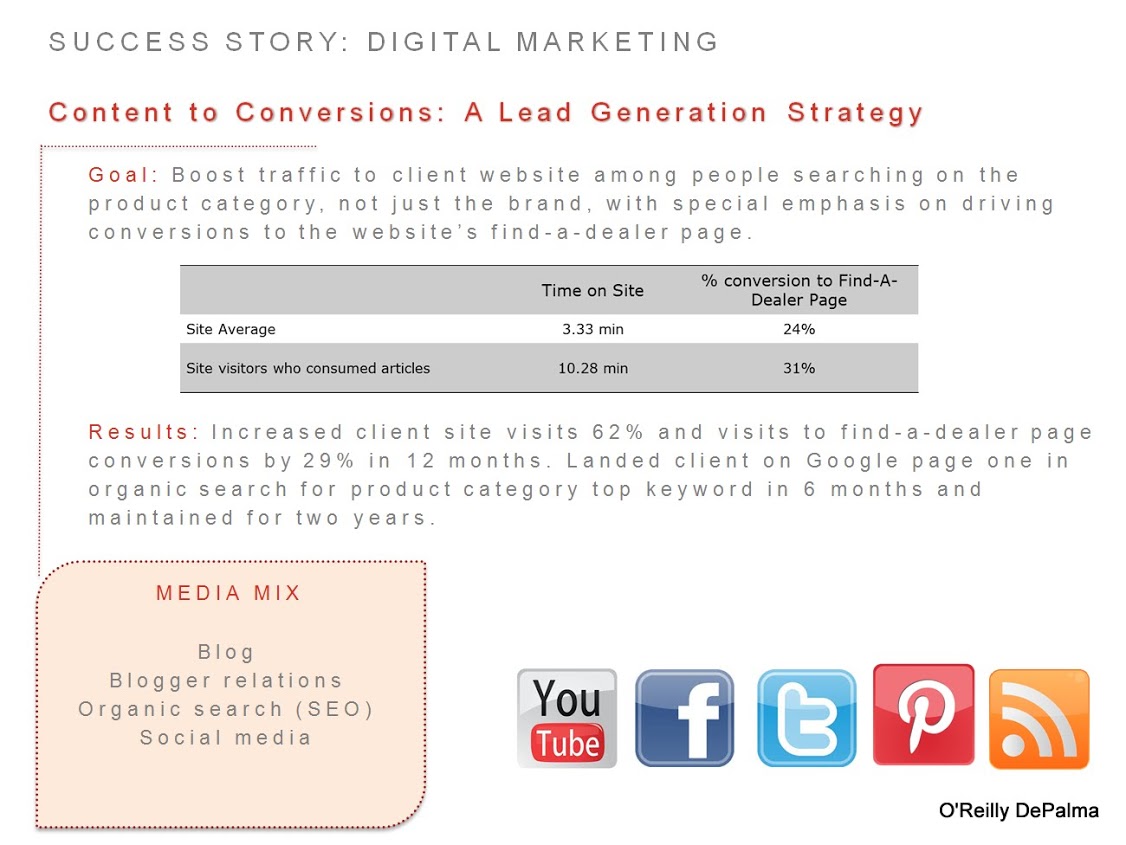What’s the point of content marketing? Good question. If you’re like me, you are overwhelmed with the day-to-day activities associated with running your business. The last thing you want to worry about is another obligation such as creating online content.
However, as a business person, you’re aware you need to be in front of your customers when they are in the buying process. Increasingly, the buying process begins online, at a search window, typing in words that relate to the challenge they face, to the problem they are looking to address.
If you’ve done your digital homework and created online content, you have a terrific chance of getting found online in search engine results by the people who are most likely to become customers.
The point is that online content allows you to connect with people active in the buying process. Really.
If you think of your online presence, and particularly your company website, as the digital equivalent of your brick-and-mortar business, then you have a chance of succeeding.
Why? Because you’ll start taking seriously the presence that your online real estate creates for you. You’ll think of it as a business asset that you deploy strategically.
You’ll consider which potential customers (aka personas) come to your site and what they do once they arrive.
You’ll start thinking about the path they take before purchasing.
You’ll anticipate the questions they ask and the words they use and be ready with responses and technical references to support your stand.
Here’s the interesting part about all this. You naturally do this when you discuss your business and marketplace with your sales organization, or when a potential customer approaches you in person.
All you need to do, then, to create online content is make multiple use of what you naturally do in support of your business:
- Publish on your website or your blog answers to the questions potential customers ask you using the language they use. Do so regularly and consistently.
- Explain how you, your organization and your associates are different from other resources. Be sure to highlight how those differences create value for your prospects. You may be bigger and better, but who cares if that means more bureaucracy for customers to wade through!
- Share your message using multiple media. In addition to your website and blog, publish updates on the social networks relevant to your customer audience – perhaps that’s LinkedIn or during a Twitter Chat. Don’t forget the power of a conversational follow up email after a phone call.
Online content is effective; it’s useful; it works for you 24/7 and it can help you build customer relationships.
After all, in a world where people are busy, don’t want to waste time, don’t trust marketing pitches and tend to do their own research before making a buying decision, online content rules.
It supports the sales process and helps build relationships with customers over time and across the phases of the buying process. It allows you to humanize yourself, your company, your employees and your solutions for prospective customers. In the process, you not only educate them, but you pre-qualify them to do business with you.
The final point of online content is that you are able to measure what works and what doesn’t by observing website analytics and evaluating performance – something not as easily available offline.
Ready to commit to online content now?
(Note: O’Reilly DePalma is ready to commit to online content! Realizing that we also get caught up in the daily service of our clients and running our business, we’re happy to announce that we’ve retained Christine Whittemore, Chief Simplifier of Simple Marketing Now to guest-blog for us once a month, on topics of content marketing, lead generation, and customer relationship marketing. Christine and Nora DePalma met via Twitter in 2010, and have been collaborating ever since. For examples of our collaboration, follow Mr. Steam at blog.mrsteam.com.)


 Builder and blogger Todd Vendituoli notes that first dates can be hard. Especially between bloggers and brands.
Builder and blogger Todd Vendituoli notes that first dates can be hard. Especially between bloggers and brands.